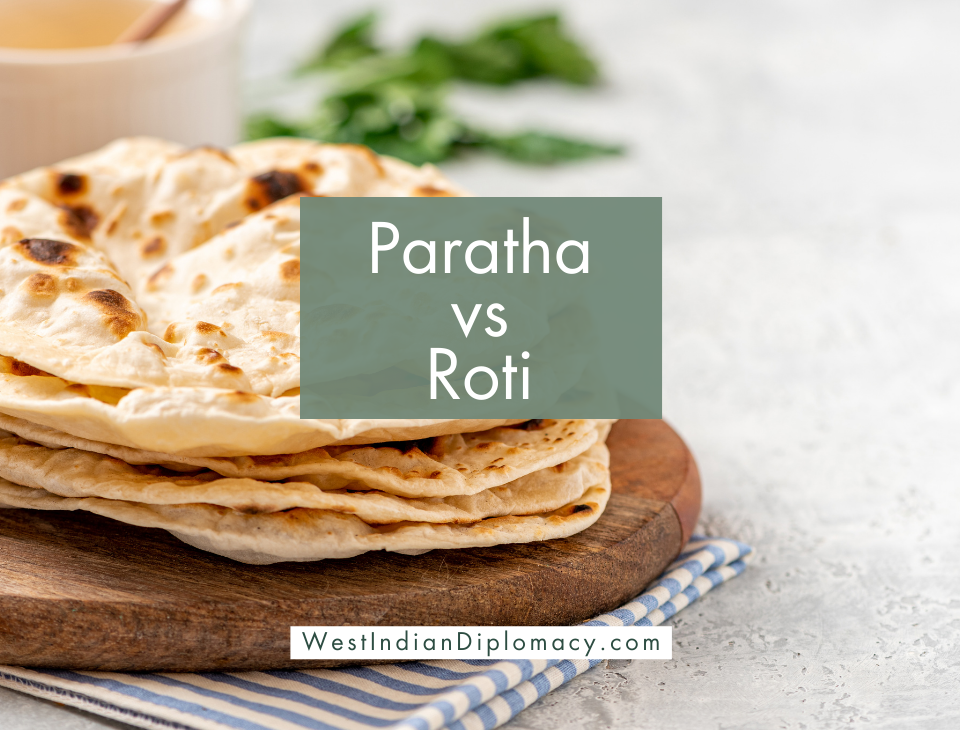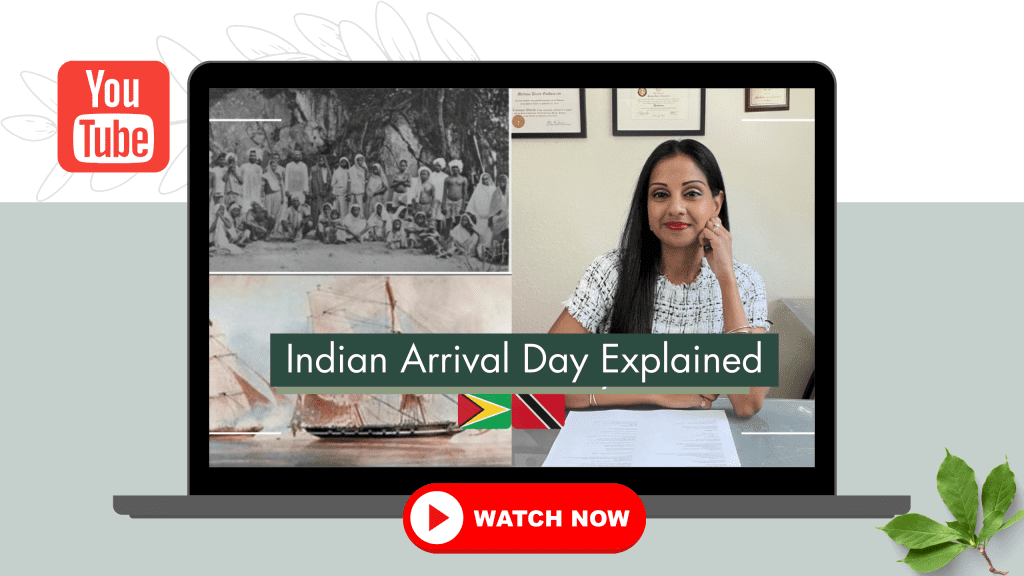Paratha vs Roti: Exploring the Delicious Indian Breads

- Introduction to Paratha vs Roti
- Roti: The Simple Unleavened Flatbread
- Paratha: The Flaky and Flavorful Delight
- Key Differences Between Paratha and Roti
- Conclusion
- Frequently Asked Questions (FAQ)
This post is about Paratha vs Roti, and their differences.
Introduction to Paratha vs Roti
Indian cuisine is known for its rich and diverse flavors, and one of the key components that adds to its charm is the wide variety of breads like paratha and roti. Among these, roti and paratha hold a special place as two popular and beloved Indian breads. While they may appear similar at first glance, there are distinct differences in their preparation, taste, and texture. In this blog, we will delve into the world of paratha and roti, unraveling their unique characteristics and exploring the culinary traditions associated with them in South Asia and the Caribbean.
These doughs have different names in the Caribbean and India but are often consumed in a similar way.
Roti: The Simple Unleavened Flatbread
Roti, sometimes referred to as chapati, is a traditional Indian bread that has been a staple in Indian households for centuries. Made from whole wheat flour and water, Indian roti is an unleavened flatbread that is typically cooked on an open flame or a hot skillet. The dough is rolled into small balls and flattened with a belna (rolling pin) before being cooked to a golden brown, resulting in a chewy texture.
Unleavened refers to food products, particularly bread, that are made without leavening agents such as yeast or baking powder. Leavening agents are typically used in baking to make dough rise and create a light and fluffy texture. Unleavened bread, on the other hand, remains flat and dense.
One of the key features of roti is its simplicity. It is made with minimal ingredients and is considered a healthier option due to its low-calorie content and high fiber content. Roti pairs well with a variety of side dishes, such as curries.
There are regional differences and different ways to cook roti. In the Caribbean, roti is a generic term for all types of flat breads, and can be used to describe any type of roti. The term roti in India seems to describe a leavened bread in the West Indies known as sada roti (one of many types of roti in the Caribbean).
Paratha: The Flaky and Flavorful Delight
In contrast to roti, paratha embodies indulgence and flavor. The word "paratha" is an amalgamation of the words "parat" meaning layers and "atta" meaning dough, which aptly describes its unique preparation. Indian Paratha is made from whole wheat flour mixed with oil or ghee (clarified butter) and various fillings, such as aloo (potato), paneer (cottage cheese), or methi (fenugreek). The dough is rolled out, layered with ghee or oil, and folded multiple times to create a flaky texture.
The cooking process of paratha involves frying it on a medium high heat until it turns golden brown. The result is a delicious flatbread with a crispy exterior and a soft, flavorful interior. Parathas are often enjoyed as a hearty breakfast or as a main course.
Paratha in Indian and the Caribbean are very similarly made. They are both flaky. In Guyana, paratha is often referred to as oil roti or clap roti. In the Caribbean, you can make paratha roti with whole wheat and/or white flour.
Key Differences Between Paratha and Roti
While both paratha and roti are beloved Indian breads, there are several key differences that set them apart.
Firstly, Indian roti is a simple unleavened flatbread cooked on an open flame or skillet, while paratha (or oil roti in the Caribbean) is a layered flatbread that requires the process of ghee-layering and frying. This gives paratha its distinctive flaky texture and rich flavor. Caribbean sada roti is leavened.
Secondly, roti is commonly consumed in North India, where it is eaten on a daily basis, while paratha is more popular in southern India, where it is relished for its indulgent nature. Regional variations in names, cooking methods, and fillings also contribute to the diversity of these breads across India. Paratha is eaten throughout the Caribbean.
Conclusion
Paratha and roti are both delightful Indian breads that have their own unique characteristics and cultural significance. While roti emphasizes simplicity and health benefits, paratha offers a more indulgent and flavorful experience. Whether you prefer the chewy texture of roti or the flaky layers of paratha, exploring the diverse world of Indian breads is sure to be a delightful culinary adventure.
So, the next time you visit an Indian or Caribbean restaurant or try your hand at cooking Indian cuisine, don't forget to savor the taste of paratha and roti, and appreciate the subtle differences that make them an integral part of Indian and Caribbean culinary traditions.
Frequently Asked Questions (FAQ)
1. What is the difference between paratha and roti?
Paratha and roti are both types of Indian breads, but they have distinct differences. Indian rooti is a simple unleavened flatbread made with whole wheat flour and water, cooked on an open flame or skillet. Paratha, on the other hand, is a layered flatbread that involves folding and rolling the dough with ghee or oil, resulting in a flaky texture. This flaky roti is often filled with various ingredients like potato or cheese, while roti is typically plain. These can also be referred to as aloo paratha, aloo roti, cheese roti, pepper roti, etc.
Roti in the Caribbean is a generic term for flat breads, and are leavened. Sada roti is the simplest form, while paratha/oil roti are fan favorites.
2. Which regions in India are known for paratha and roti?
Roti is commonly consumed in North India and is a staple in households across the region. Paratha, on the other hand, is more popular in South India, where it is enjoyed as a hearty breakfast or main course. However, both paratha and roti can be found and enjoyed throughout the country, South Asia, and the Caribbean.
3. Are paratha and roti healthy?
Both paratha and roti can be part of a healthy diet when consumed in moderation. Roti, being made with whole wheat flour, is high in fiber and lower in fat compared to paratha. Paratha, with its layered and fried nature, tends to be richer and higher in calories. However, the choice of fillings and cooking methods can also impact the overall nutritional value.
In the Caribbean, white flour is often used. For a healthier alternative, people often mix the white all purpose flour or self-rising flour with whole wheat flour. If weight loss is a concern, you may not need to eliminate these if you eat it in moderation to limit high calories.
4. Can paratha and roti be gluten-free?
Traditional parathas and rotis are made with wheat flour, which contains gluten. However, there are gluten-free alternatives available, such as using flours made from rice, millet, or other gluten-free grains. These variations may have slightly different textures and flavors but can still be delicious alternatives for individuals with gluten sensitivities or celiac disease.
5. How do I serve paratha and roti?
Paratha and roti are versatile breads that can be enjoyed with a variety of side dishes. They pair well with curries, tandoori chicken, lentils, or vegetable dishes. Additionally, parathas can be filled with savory ingredients or served alongside chutneys added flavor. This staple food can be served with any number of variety dishes for a delicious breakfast, or hearty dinner.
6. Can I make paratha and roti at home?
Absolutely! You do not need to go to a Caribbean roti shop or Indian restaurant to enjoy a leavened or unleavened bread. Paratha and roti can be made at home with simple ingredients. There are numerous recipes available online that provide step-by-step instructions on how to prepare these simple dough recipes. Experiment with different fillings for paratha or enjoy the simplicity of plain roti.
Please note that these answers are meant to provide general information and may vary based on specific regional and cultural variations.
This post is about Paratha vs Roti, and their differences.
Related Posts:
By Melissa Ramnauth, Esq. | This content is copyright of West Indian Diplomacy, LLC and may not be reproduced without permission.

She runs West Indian Diplomacy, a Caribbean blog aimed at promoting West Indian history and business in the global marketplace. Melissa has been an attorney for over 10 years. She currently focuses on trademark registration, trademark searches, and office actions. She also has extensive legal experience in the areas of trademarks, copyrights, contracts, and business formations. She owns her own Trademark Law Firm that is virtually based out of Fort Lauderdale.
Please Sign Our
Petition to Preserve Our Ship Records
By Submitting this Form
This page may contain affiliate links and ads at no extra charge to you. If you purchase something from these links and ads, West Indian Diplomacy may earn a small commission that goes towards maintaining the website and sharing our history.
Book Recommendations
The First East Indians to Trinidad: Captain Cubitt Sparkhall Rundle and the Fatel Rozack
History of the People of Trinidad and Tobago
An Introduction to the History of Trinidad and Tobago

Legal Disclaimer
Your use of the content on this site or content from our email list is at your own risk. The use of this website does not create an attorney-client relationship. West Indian Diplomacy does not guarantee any results from using this content and it is for educational purposes only. It is your responsibility to do your own research, consult, and obtain a professional for your medical, legal, financial, health, or other help that you may need for your situation.
The information on West Indian Diplomacy is “as is” and makes no representations or warranties, express or implied, with respect to the content provided on this website or on any third-party website which may be accessed by a link from this Web site, including any representations or warranties as to accuracy, timeliness, or completeness. West Indian Diplomacy will not be liable for any losses, injuries, or damages from the display or use of this information.
All information on this website is accurate and true to the best of West Indian Diplomacy's knowledge, but there may be omissions, errors or mistakes. West Indian Diplomacy is not liable for any damages due to any errors or omissions on the website, delay or denial of any products, failure of performance of any kind, interruption in the operation and your use of the website, website attacks including computer virus, hacking of information, and any other system failures or misuse of information or products.
As of this date, West Indian Diplomacy does not write sponsored posts or accept free products for review. All thoughts and opinions written by West Indian Diplomacy is our own.
West Indian Diplomacy welcomes comments on blog posts. All comments submitted to us are the opinions of the author and do not necessarily reflect or represent the views, policies, or positions of this site. We reserve the right to use our own discretion when determining whether or not to remove offensive comments or images.